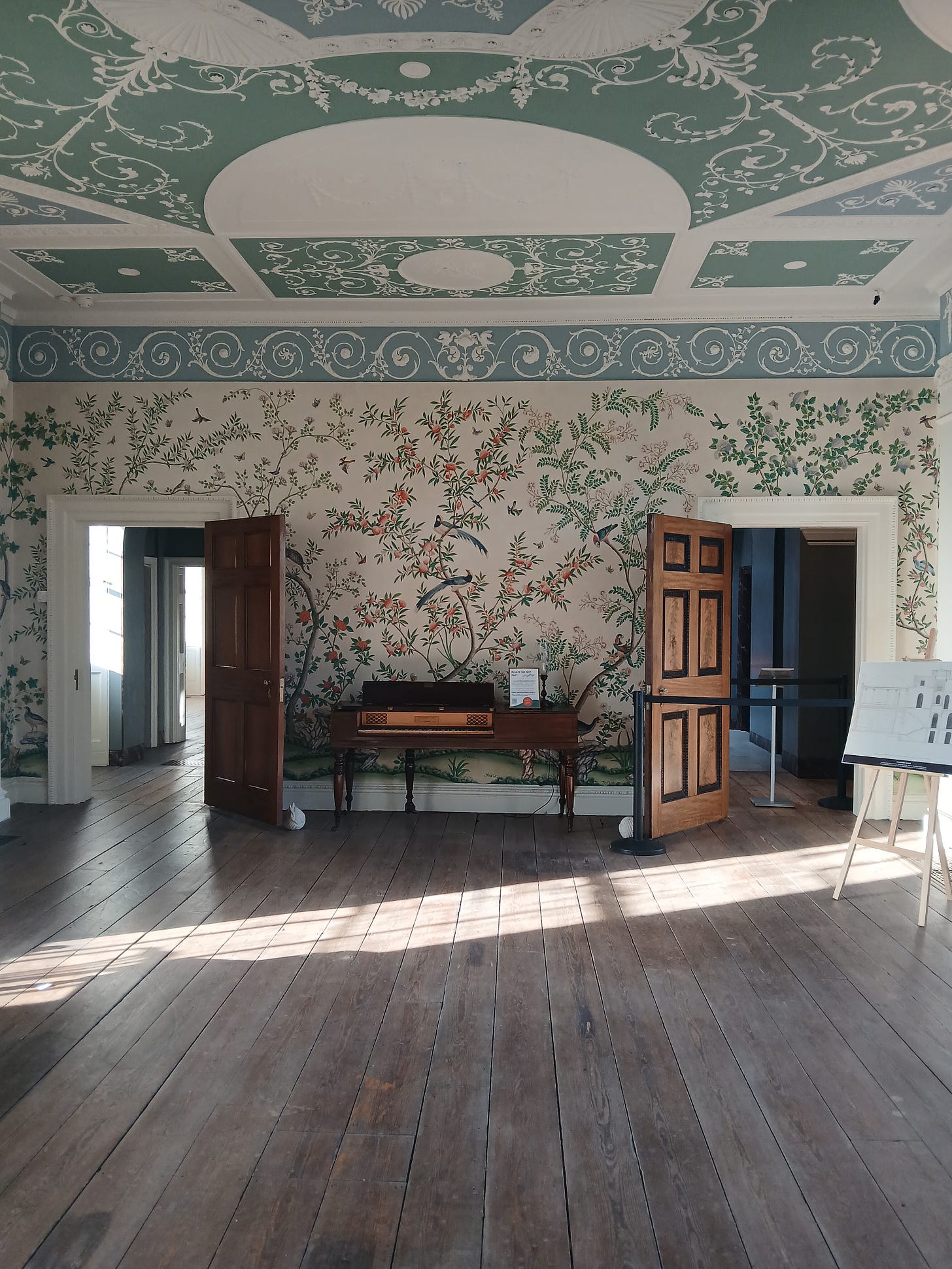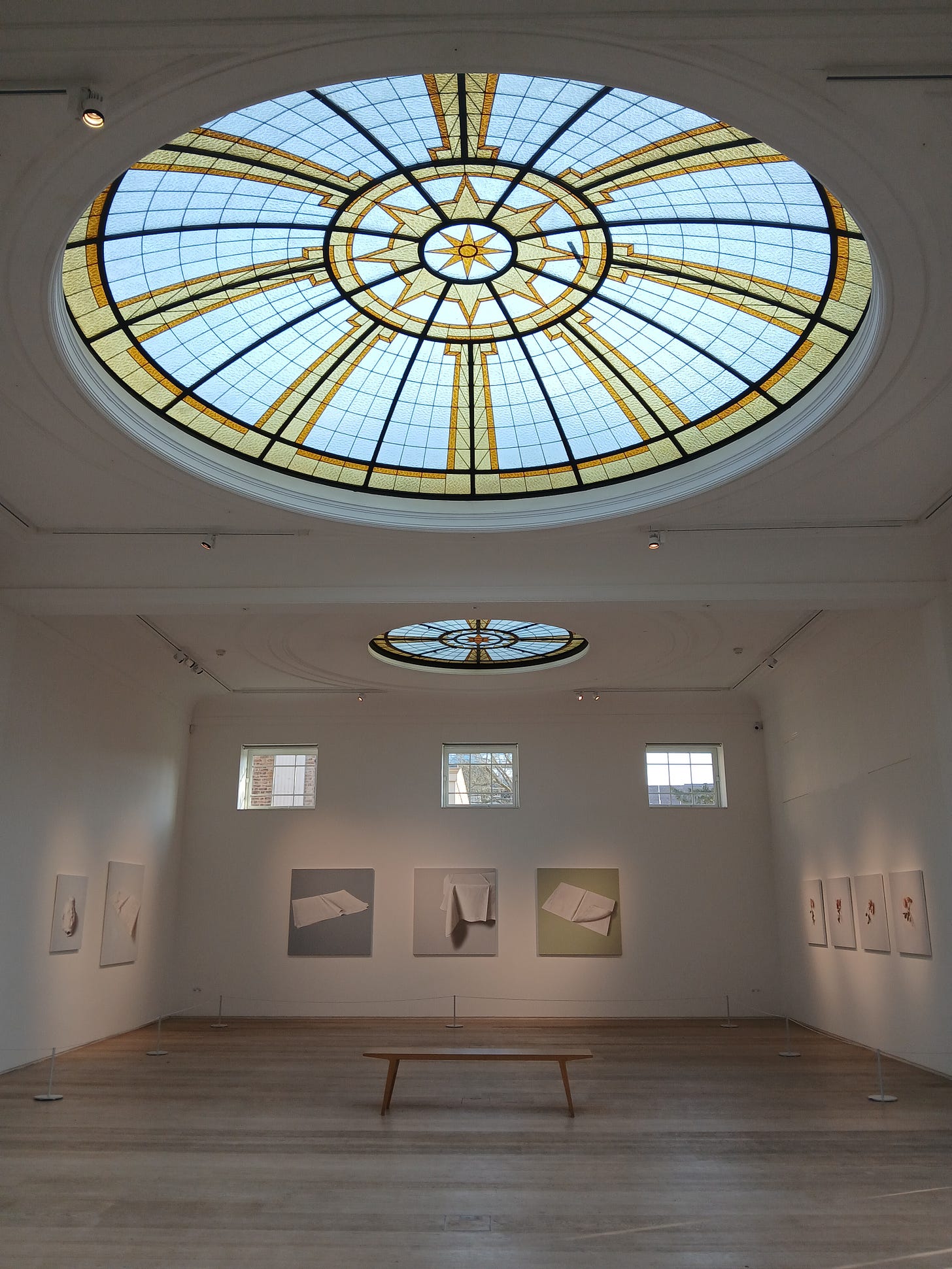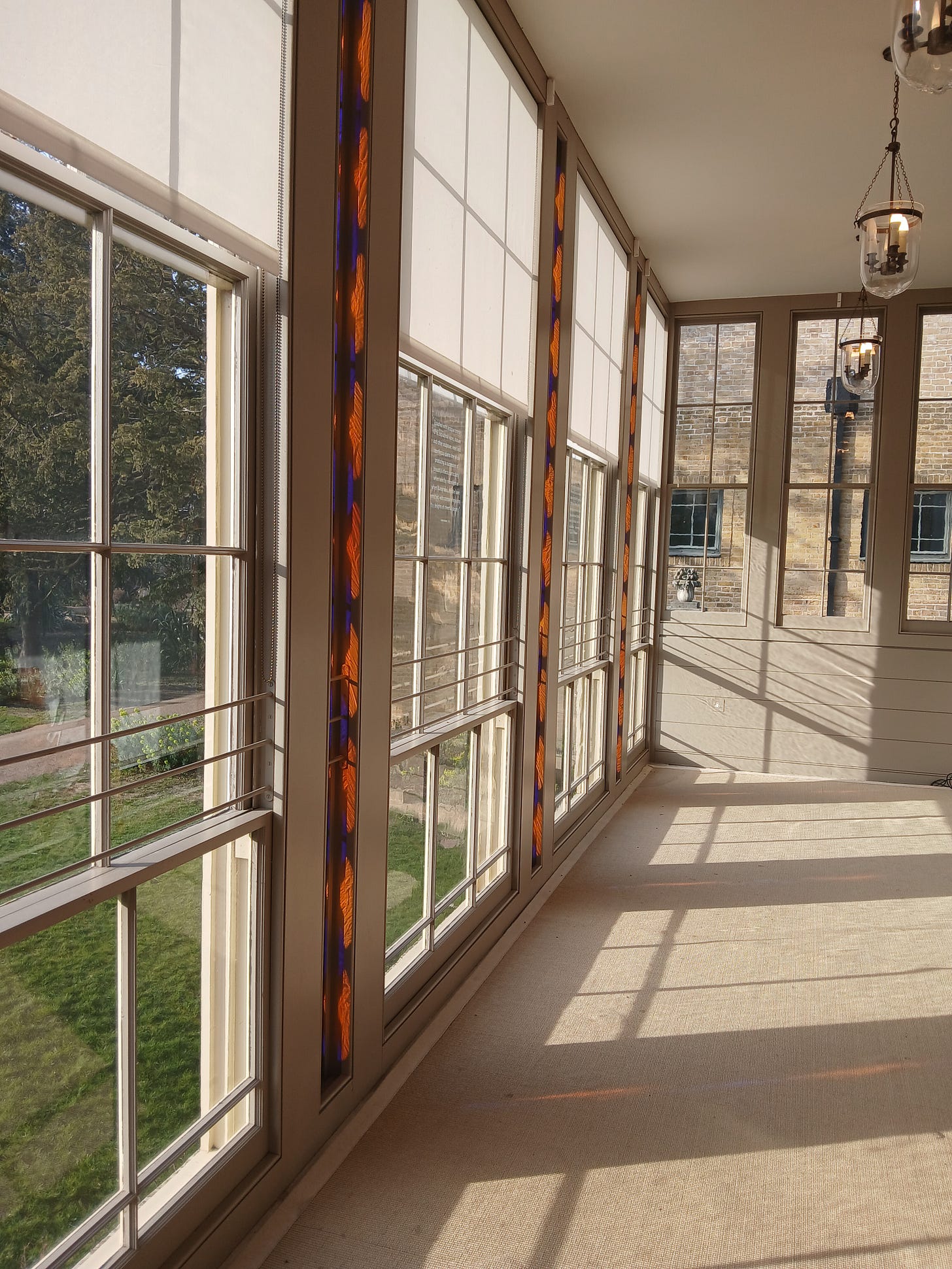I went to see Scottish Painter Alison Watt’s exhibition From Light in west London in early March. It was on display at Pitzhanger Manor, once belonging to architect and collector John Soane (1753-1837).
It was the first warm, sunny day I had experienced for a while, the day it felt like Spring was perceptible and I could uncurl my body from that cold-weather-huddle core of tension. The rooms of the house are beautifully designed, moving with simple ceremony from one room to another, moulding and maximising light. Reopened in 2019 after a major restoration project, there isn’t much furniture in the house. Repainted wallpaper and ceilings — one with trellises of wildflowers, one just an oval of blue sky haze — are fresh and bright. It feels like the (relatively) minimalist counterpart of the John Soane Museum in Holborn, which is a nested box bristling with antiques and statues and paintings and all kinds of objects.
Some of Watt’s works are on display inside the Manor itself; others are hung in a separate gallery space, built in the 1930s. In a video interview with Studio International, Watt relates how she was intrigued by Soane’s description of Pitzhanger as a ‘self-portrait’.
I love the way that she describes her artistic process of ‘intensive looking’ at simple objects (flowers, fabric, natural specimens, skulls etc.), and how light is an intrinsic element of this. ‘Light is part of the substance of a painting,’ she says, and ‘Sometimes when light clings to the surface of an object it causes it to glow.’ Light transforms. It can ‘give something very everyday dignity.’
I’ve been reading Middlemarch (1871) by George Eliot, as I’ve had a copy for ages and kept seeing it recommended on Substack. It turns out that Eliot was the perfect author for my visit to Pitzhanger Manor. I keep noticing instances where she uses space, or moving through certain spaces, as a metaphor:
[…] nor did the contemplation of that matrimonial garden scene, where, as all experience showed, the path was to be bordered with flowers, prove persistently more enchanting to him than the accustomed vaults where he walked taper in hand.
For to Dorothea, after that toy-box history of the world adapted to young ladies which had made the chief part of her education, Mr Casaubon’s talk about his great book was full of new vistas […]
But the moment of vocation had come, and before he got down from his chair, the world was made new to him by a presentiment of endless processes filling the vast spaces […]
I’m struck by Eliot’s expressions of characters’ interior lives as various architectural spaces (indoors and outdoors, claustrophobic or expansive). I connect it with the idea of Soane’s house as a kind of portrait, and Watt’s description of his designs as ‘spaces of invention’ and imagination:
He had a way of harnessing light to such an extent that it becomes a character in his buildings, because it affects mood and atmosphere.
I found some more examples in Middlemarch as I was reading this morning. This in relation to Dorothea’s nascent disillusionment with her marriage to Casaubon during her honeymoon in Rome, picking up on the ‘vistas’:
How was it that in the weeks since her marriage, Dorothea had not distinctly observed but felt with a stifling depression, that the large vistas and wide fresh air which she had dreamed of finding in her husband’s mind were replaced by ante-rooms and winding passages which seemed to lead nowhither?
And later, as this newsletter has taken me the whole month to write, Will Ladislaw’s opinion on the appeal of Rome and its layers of history:
[…] the very miscellaneousness of Rome, which made the mind flexible with constant comparison, and saved you from seeing the world’s ages as a set of box-like partitions without vital connection.
Something about this architectural interiority is very appealing. Can I rearrange my mind into a sequence of carefully-designed, suntrap rooms? If your imagination was a space — a house, a room, a garden — what would it feel like to inhabit? It’s been a long Winter. As the springtime expands, I’m hoping to internalise Pitzhanger’s hospitality to light, air, nature and movement.
Thank you so much for reading! Thank you especially to my subscribers still here after long hiatus!
If you’re about or visiting London I recommend checking out Pitzhanger Manor and Alison Watt’s exhibition, on until 15th June.
Since I last posted, I’ve interviewed a couple of amazing artists about their work for Corridor8: ‘Translating Textiles into Print: Jenny Steele’s Women in Print Residency’ and Amy Williams’ ‘Progressing with Paper’.







Loved this edition, perfect reading for spring - the light coming through my bedroom window in the last couple weeks has been so transformative! 🌞